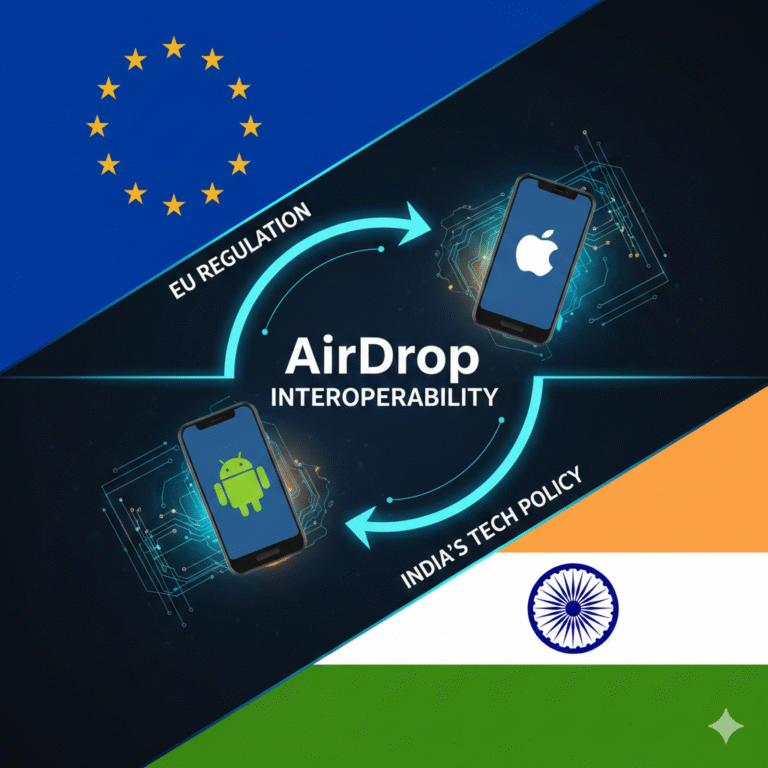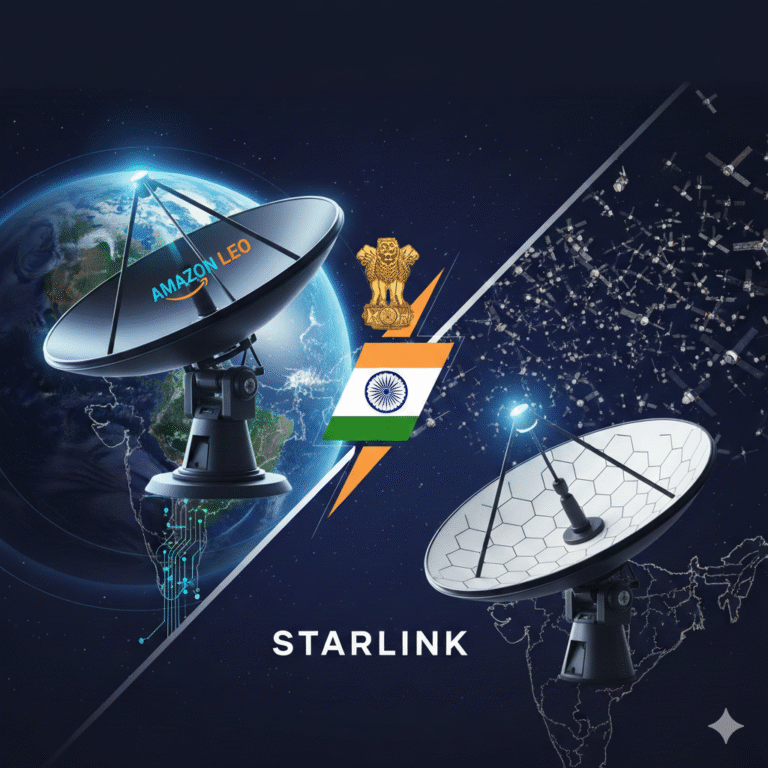Gist:
- BharatNet is India’s ambitious project to connect 650,000 villages with fibre broadband.
- The emergence of satellite internet providers like Starlink and Kuiper is challenging the fibre-centric approach.
- Experts suggest a hybrid model, blending fibre and satellite, could be more efficient.
- Policymakers are urged to rethink subsidies to include satellite communication.
- The future of digital inclusion in rural India may depend on technological flexibility.
India’s Connectivity Crossroads
In the digital age, connectivity is more than just a convenience—it is a fundamental right and a necessity for economic growth. India’s BharatNet project, launched with the promise of bridging the urban-rural digital divide by laying fibre-optic cables across the country, represents a massive commitment to this vision. However, the landscape is shifting rapidly. With satellite internet technologies becoming more accessible and effective, especially in hard-to-reach areas, questions are being raised about BharatNet’s relevance and sustainability.
As global players like SpaceX’s Starlink and Amazon’s Project Kuiper prepare to offer satellite broadband in India, the nation faces a crucial decision: Should it continue investing heavily in fibre infrastructure alone, or should it adopt a hybrid strategy combining both fibre and satellite solutions?
Understanding BharatNet: A Vision for Rural Digital India
What Is BharatNet? BharatNet, earlier known as the National Optical Fibre Network (NOFN), is a flagship project by the Indian government aimed at connecting all 250,000 Gram Panchayats (GPs) in the country via high-speed optical fibre. The project, implemented in multiple phases since 2011, seeks to enable last-mile internet connectivity in over 650,000 villages.
Objectives of BharatNet:
- Deliver high-speed broadband to rural and remote areas
- Empower e-governance, e-health, e-education, and digital payments
- Strengthen rural entrepreneurship through digital tools
Achievements So Far:
- Over 180,000 GPs have been connected with fibre cables as of 2024.
- Wi-Fi hotspots and fibre points have been installed in numerous rural locations.
Despite these successes, the deployment pace has often lagged behind targets due to infrastructural and administrative challenges.
Enter Satellite Internet: A Disruptive Force
The Rise of Starlink and Kuiper Companies like Starlink (SpaceX) and Project Kuiper (Amazon) are deploying Low Earth Orbit (LEO) satellite constellations to deliver high-speed internet globally, including remote, underserved regions.
Advantages of Satellite Internet:
- Rapid deployment, especially in difficult terrains (mountains, forests, islands)
- Scalable and weather-resilient networks
- No need for underground or pole-mounted cables
- Easier maintenance in extreme conditions
These strengths have made satellite internet an attractive alternative for last-mile connectivity in rural India, where terrain and weather often hinder fibre installation.
Challenges with Satellite Communication:
- Higher initial equipment costs (e.g., dish, modem)
- Regulatory approval and spectrum allocation
- Latency concerns, although LEO satellites are minimizing this gap
Fibre vs Satellite: Key Comparison Metrics
| Metric | Fibre Broadband | Satellite Internet |
|---|---|---|
| Speed | High and consistent | Variable but improving |
| Latency | Low | Higher, improving with LEO |
| Infrastructure cost | High (for remote areas) | Lower (for remote deployment) |
| Maintenance | Complex in rural terrain | Easier, centralised updates |
| Scalability | Slower in hard-to-reach | High |
| Cost to users | Often subsidised | Still high, reducing over time |
The Case for a Hybrid Connectivity Model
Experts across the telecom and digital policy spectrum are advocating for a hybrid model that leverages both fibre and satellite technologies depending on the geographic and demographic needs.
Advantages of a Hybrid Approach:
- Fibre for densely populated or semi-urban areas
- Satellite for remote, sparsely populated, or disaster-prone regions
- Optimized capital expenditure and faster rural inclusion
Case Study: Remote Education in Ladakh In mountainous Ladakh, fibre rollout has been sluggish due to snow, rockfalls, and poor access. A pilot deployment of satellite internet for digital classrooms has shown promising results with uninterrupted video lectures and resource access, suggesting the potential of satellite tech in similar regions.
Why Subsidising Satellite Internet Matters
The government has traditionally subsidised fibre deployment under BharatNet. However, industry experts argue that similar fiscal incentives should now be extended to satellite infrastructure to ensure equitable technological advancement.
Policy Recommendations Include:
- Spectrum policy reforms to accommodate LEO satellites
- Financial incentives for satellite dish installation
- Public-private partnerships for dual-technology rural deployment
- Performance-based funding models for hybrid setups
Industry Voices: Diverging Opinions
Fibre-Only Advocates: Large telecom infrastructure providers argue that fibre offers better reliability and long-term returns on investment. They claim satellite signals can be disrupted by atmospheric conditions and argue fibre is future-proof.
Hybrid Advocates: Many digital policy experts and newer tech players counter that a rigid fibre-only approach is both impractical and exclusionary. They emphasize inclusivity, rapid scalability, and resilience against environmental challenges.
Quote from Telecom Policy Expert:
“It’s not about fibre vs. satellite. It’s about which technology serves the people best, fastest, and at the lowest cost.”
Global Models India Can Learn From
Australia’s National Broadband Network (NBN): Incorporates a mix of fibre, fixed wireless, and satellite. Remote parts of Australia benefit from satellite internet where fibre is uneconomical.
United States’ RDOF Program: The Rural Digital Opportunity Fund (RDOF) allows ISPs to use any technology—fibre, satellite, or wireless—to compete for subsidies based on performance.
These models show how flexibility leads to faster and more inclusive rural broadband coverage.
India’s Next Steps: Rethinking the BharatNet Strategy
India has the unique opportunity to lead the Global South by setting an example of adaptive digital infrastructure policy. Instead of continuing a one-size-fits-all model, India can:
- Audit the performance of BharatNet in completed areas
- Identify regions where satellite would outperform fibre
- Launch pilot projects in satellite-prone regions
- Reform regulatory pathways for satellite operators
- Build a neutral technology subsidy framework
Conclusion: Digital India Needs a Flexible Backbone
India’s digital future lies in its ability to be flexible and forward-thinking. BharatNet, while commendable, cannot meet the demands of all rural regions single-handedly. Satellite internet offers speed, scalability, and reach that fibre alone cannot match, particularly in India’s varied terrain.
A hybrid approach is not just a compromise—it’s a strategic necessity. By embracing both fibre and satellite communication, and ensuring fair subsidies for both, India can truly connect its last village and fulfill its promise of Digital India for all.









+ There are no comments
Add yours